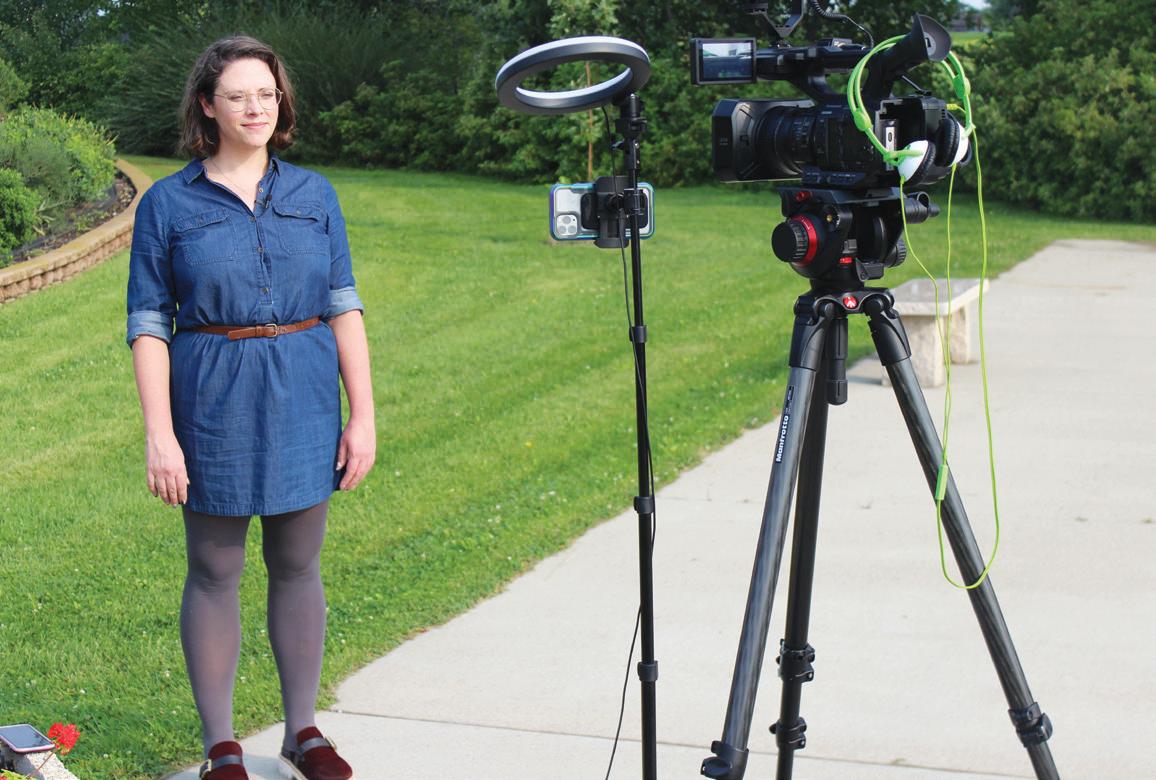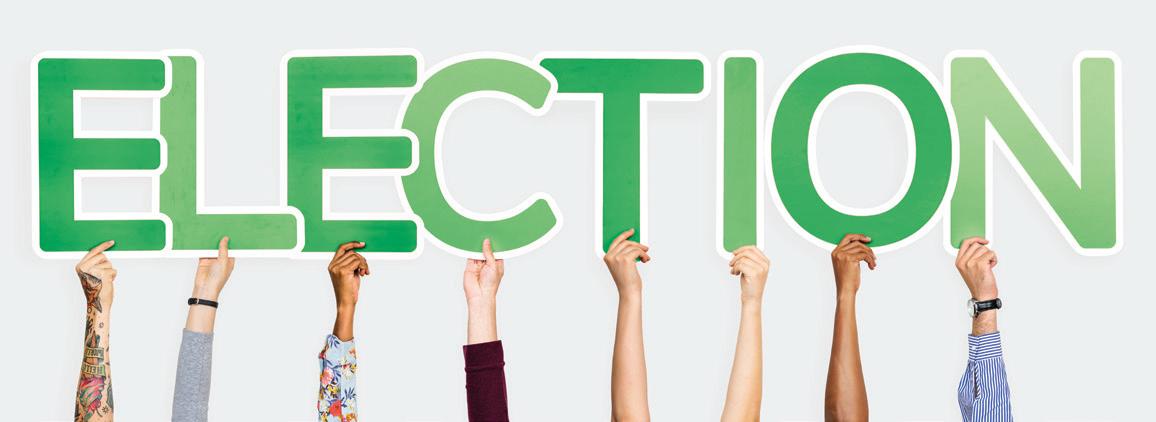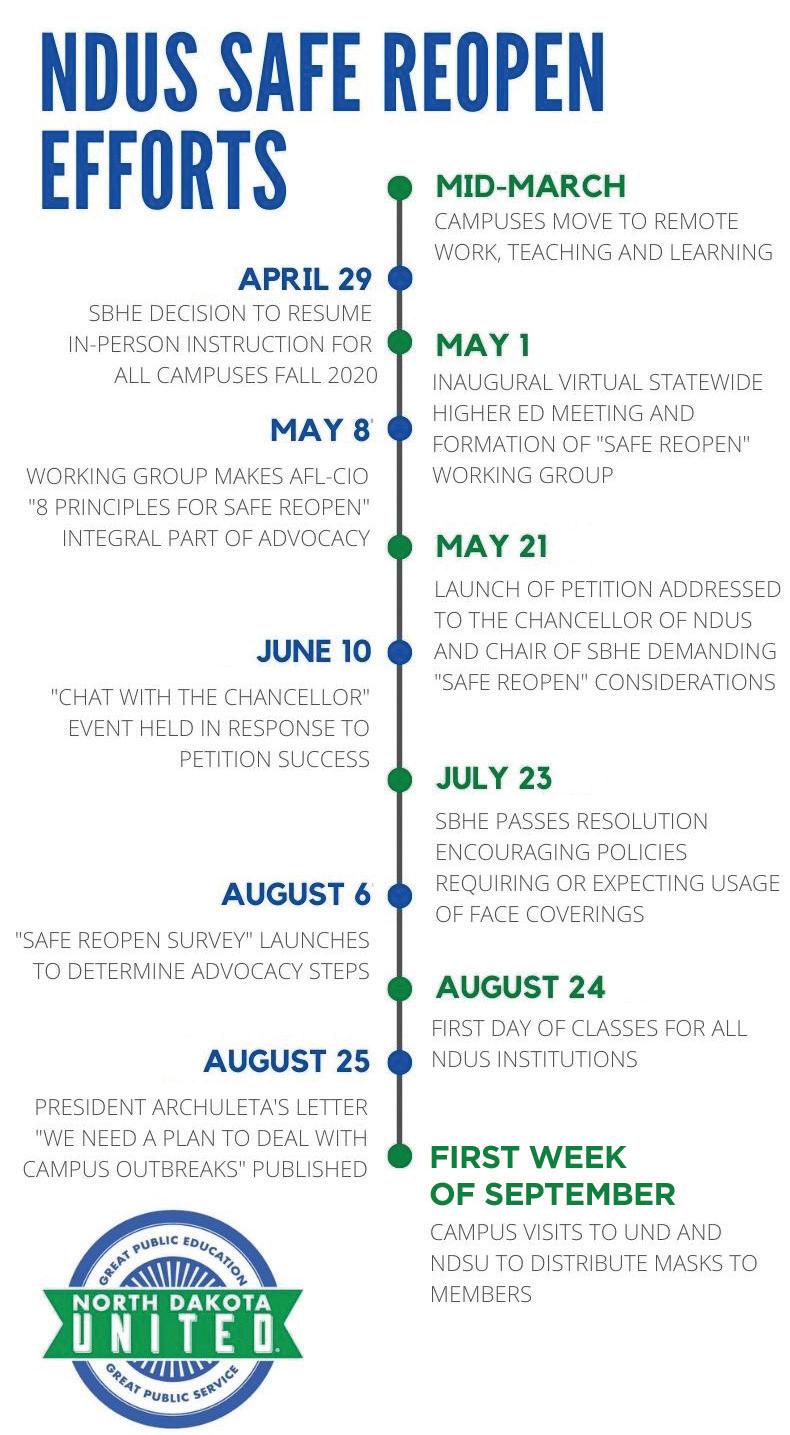Help Keep Our Schools Open The Science Behind Wearing a Mask By Leah DeKrey, NDU Communications
No one likes the feeling of a square piece of fabric blocking their airway. However, the small discomfort of wearing a mask has been shown to drastically protect individuals from the spread of COVID. The health and safety of North Dakota’s teachers, faculty, staff, and students, as well as the ability to keep our schools and campuses open, hinges on everyone doing their part by wearing a mask.
WHY YOU SHOULD CONSIDER
WEARING A MASK WEARING A MASK
WHY YOU SHOULD CONSIDER
If 95% of people wear cloth masks when they're interacting with other people, it reduces transmission by at If 95% of people wear cloth masks when they're least 30%. interacting with other people, it reduces transmission by at
Infections without masks Infections without each infected person passes masks on the virus to 1.03 others.
least 30%.
each infected person passes
Infections with 95% mask wearing Infections with 95% mask each infected person passes wearing on the virus to 0.72 others. each infected person passes
on the virus to 1.03 others.
on the virus to 0.72 others. Start: 10 infections
Start: 10 infections New infections: 5 days later
There’s a lot of research available that proves how masks work to decrease the spread of the COVID, which according to the CDC is now the third leading cause of death in 2020, surpassing accidents, injuries and diabetes.i
New infections: 5 days later New infections: 10 days later New infections: 10 days later New infections: 15 days later New infections: 15 days later New infections: 20 days later New infections: 20 days later New infections: 25 days later
Here’s What We Know A recent meta-analysis done by the University of Washington’s Institute for Health Metrics and Evaluation took every study published on the protective effect of masks and reanalyzed all the data. The analysis found that if 95% of people wear cloth masks when they’re in public spaces, it reduces transmission by at least 30%. This sounds like a modest improvement, but when each COVID positive individual infects 30% fewer people, the results add up quickly.ii The cumulative impact a 30% decrease can have on our school and university systems would be 8
|
ND United Voices
New infections: 25 days later New infections: 30 days later New infections: 30 days later New infections: 35 days later New infections: 35 days later
MODEST, WIDESPREAD PROTECTION ADDS UP FAST MODEST, WIDESPREAD PROTECTION ADDS UP FAST
Total new infections after 35 days: Total new infections after 35 days:
89 89
Total new infections after 35 days: Total new infections after 35 days:
33 33
Source: https://www.npr.org/sections/health-shots/2020/07/23/894425483/can-masks-save-us-from-more-lockdowns-heres-what-the-science-says
Source: https://www.npr.org/sections/health-shots/2020/07/23/894425483/can-masks-save-us-from-more-lockdowns-heres-what-the-science-says









